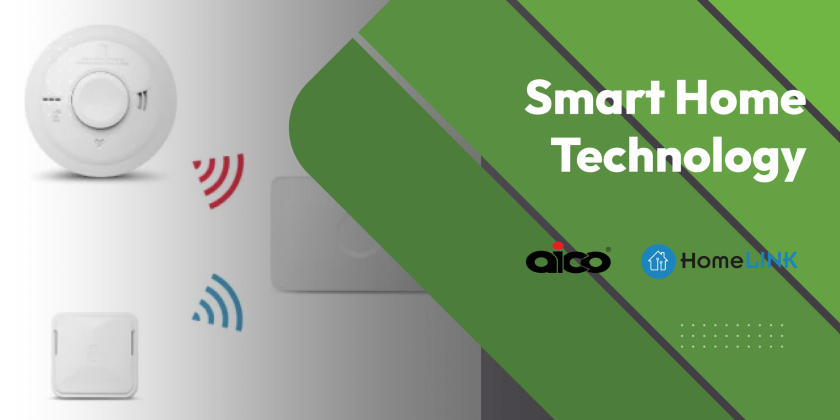Harnessing the power of the sun has become an increasingly popular way for households and businesses to generate electricity. Solar panels, with their sleek design and promise of sustainable energy, are now a common sight on rooftops around the UK. But how much electricity can a single solar panel actually produce? This question is crucial for anyone considering making the switch to solar energy. In this post, we’ll break down the factors that influence solar panel efficiency, from sunlight availability to the technology behind the panels, providing you with the knowledge you need to make informed energy decisions.
Basics of Solar Panel Efficiency
Understanding solar panel efficiency is essential for evaluating how well a solar panel can convert sunlight into usable electricity. This section provides a foundation for comprehending the various elements influencing this efficiency, from technical ratings to environmental factors.
Understanding Solar Panel Ratings
Solar panel ratings are crucial for determining a panel’s capability to convert sunlight into electricity. The rating is usually expressed in watts and reflects the panel’s power output under standard test conditions. These conditions include a specific temperature and sunlight intensity, providing a benchmark for comparison.
When buying solar panels, it is vital to consider these ratings. They are indicative of maximum potential output, which can vary depending on real-world conditions. It is also important to note that efficiency is not solely about power output but also involves how effectively a panel utilises available sunlight.
Higher ratings generally mean greater efficiency, but they also come with a higher cost. Evaluating the balance between efficiency, cost, and your energy needs is key to making an informed decision.
Factors Affecting Efficiency
Several factors can impact the efficiency of solar panels. Sunlight availability is the most significant, as panels need direct sunlight to function optimally. Geographic location and time of year can greatly influence sunlight exposure.
Temperature also plays a role. Solar panels operate more efficiently in cooler temperatures. High temperatures can cause a decrease in output, which is crucial for those in warmer climates to consider.
The angle and orientation of the panels are also critical. Panels should be installed at an angle that maximises sunlight exposure throughout the day. Shadows from trees or other buildings can also impede performance, reducing overall efficiency.
Common Efficiency Metrics
Common efficiency metrics for solar panels include the conversion efficiency, which measures the percentage of sunlight converted into electricity. This is typically between 15% and 20% for most panels.
Another metric is the temperature coefficient, which indicates how well a panel maintains its efficiency as temperatures rise. A lower coefficient is preferable, indicating less loss in performance.
Energy yield is another important metric. It measures the actual energy output over a period, providing insight into a panel’s real-world performance. Understanding these metrics helps in evaluating which panels would best meet your energy needs.
Calculating Electricity Output
Calculating the electricity output of a solar panel involves understanding its rated capacity and how various factors can influence this output. In this section, we explore the methods and considerations involved in determining a panel’s actual electricity production.
How to Measure Output
To measure a solar panel’s electricity output, you need to consider its wattage and the amount of sunlight it receives. This is typically done by:
-
Identifying the panel’s wattage rating.
-
Calculating the total sunlight hours (peak sun hours) the panel receives each day.
-
Multiplying the panel’s wattage by the peak sun hours to estimate daily production.
For example, a 300-watt panel receiving 5 hours of peak sunlight per day would produce approximately 1,500 watt-hours (or 1.5 kWh) daily. This provides a baseline for estimating energy outputs based on expected conditions.
Incorporating efficiency factors such as shading, angle, and temperature can further refine these estimates, offering a more precise prediction of actual output.
Typical Output of a Single Panel
A typical solar panel produces between 250 and 400 watts of power under standard conditions. However, the actual output can vary due to several factors.
For instance, a 300-watt panel might not always reach its full potential. This depends on location, weather, and installation specifics. In the UK, with its variable weather, average daily output can be lower than in sunnier regions.
On average, a single panel can generate between 300 to 500 kWh per year, assuming optimal conditions. This output can power small household appliances or contribute significantly to reducing energy bills.
Impact of Location and Weather
Location and weather are pivotal in determining a solar panel’s output. Regions with more sunlight exposure, such as southern England, generally yield higher outputs.
Conversely, areas with frequent cloud cover or shorter daylight hours, like northern Scotland, may see reduced performance. Weather patterns, including seasonal changes and unexpected rain or snow, can also affect energy production.
Considering these factors is crucial when planning a solar installation. Adjustments to panel orientation or additional panels may be necessary to optimise performance in less favourable conditions.
Maximising Solar Panel Performance
Maximising the performance of solar panels involves strategic installation and proper maintenance. This section outlines practical steps and considerations to ensure optimal performance and longevity of your solar panels.
Optimal Installation Practices
Proper installation is critical to achieving maximum efficiency from solar panels. Here are some guidelines:
-
Choose the right location: Ensure panels are installed in a spot with maximum sunlight exposure.
-
Adjust the angle: Align panels to the optimal tilt, usually around 30 to 40 degrees in the UK.
-
Avoid shading: Minimise shadows from trees or buildings to maximise sunlight capture.
Consulting with a professional installer can provide expert advice tailored to your specific needs. Proper installation sets the foundation for efficient energy production.
Maintenance Tips for Longevity
Maintaining solar panels ensures they operate efficiently over their lifespan. Regular maintenance includes:
-
Cleaning panels regularly to remove dirt and debris.
-
Inspecting for damage such as cracks or loose connections.
-
Checking inverter performance to ensure it is functioning correctly.
Regular maintenance can prevent efficiency losses and extend the lifespan of your solar system. Simple routine checks can keep your panels in peak condition.
Monitoring System Performance
Monitoring solar panel performance helps identify potential issues early. This can be done by:
-
Installing a monitoring system that tracks energy production.
-
Regularly reviewing output data for inconsistencies.
-
Adjusting system settings as needed based on performance data.
Monitoring allows for timely interventions if performance dips, ensuring your investment continues to yield returns. It also provides valuable insights into system efficiency.
Economic Considerations
When considering solar panels, economic factors play a significant role in decision-making. This section explores cost analysis, potential savings, and available incentives to help gauge the financial viability of solar investments.
Cost vs. Output Analysis
The cost of solar panels must be weighed against their expected output. Here’s how to approach this:
-
Calculate the upfront cost of purchasing and installing the panels.
-
Estimate the annual energy savings based on expected output.
-
Determine the break-even point where savings offset initial expenses.
Understanding this balance can inform whether an investment in solar is financially sensible. It helps in planning for long-term energy independence.
Long-term Savings Potential
Investing in solar panels can offer long-term savings. Benefits include:
-
Reduced electricity bills as solar panels generate free energy.
-
Protection against energy price hikes by producing your own power.
-
Increased property value due to the addition of sustainable energy solutions.
Over time, solar panels can significantly decrease energy expenses, offering a return on investment that grows with each passing year.
Government Incentives and Rebates
In the UK, various government incentives and rebates can offset the cost of solar panels. These include:
-
The Smart Export Guarantee (SEG), which pays for surplus energy sent back to the grid.
-
VAT reductions on solar panel purchases.
-
Regional grants or rebates that vary by location.
Taking advantage of these incentives can reduce initial costs, making solar energy more accessible and appealing. They provide financial support for those transitioning to renewable energy.
Future of Solar Panel Technology
The future of solar panel technology promises exciting advancements and wider adoption. This section delves into innovations, trends, and predictions shaping the next era of solar energy.
Innovations in Solar Efficiency
Technological advancements continue to improve solar panel efficiency. Emerging innovations include:
-
Perovskite solar cells, which offer higher efficiencies at lower costs.
-
Bifacial panels, capturing sunlight from both sides to increase output.
-
Integrated solar solutions, like solar rooftops and windows.
These innovations promise to enhance solar energy’s viability, making it a more attractive option for both residential and commercial use.
Trends in Solar Energy Adoption
Solar energy adoption is on the rise globally, driven by:
-
Declining costs of solar technology.
-
Increased awareness of climate change impacts.
-
Supportive policies and incentives encouraging renewable energy use.
These trends indicate a growing shift towards sustainable energy, highlighting solar’s role in future energy solutions. Adoption is expected to accelerate further as technology improves.
Predictions for Future Developments
Future developments in solar technology are expected to focus on:
-
Higher efficiency rates, pushing beyond current limitations.
-
Wider integration into infrastructure, like solar-powered vehicles.
-
Improved storage solutions, enhancing energy availability and reliability.
Experts predict continued growth in the solar sector, with innovations paving the way for a more sustainable energy future. The potential for solar energy to transform energy landscapes remains vast and promising.


